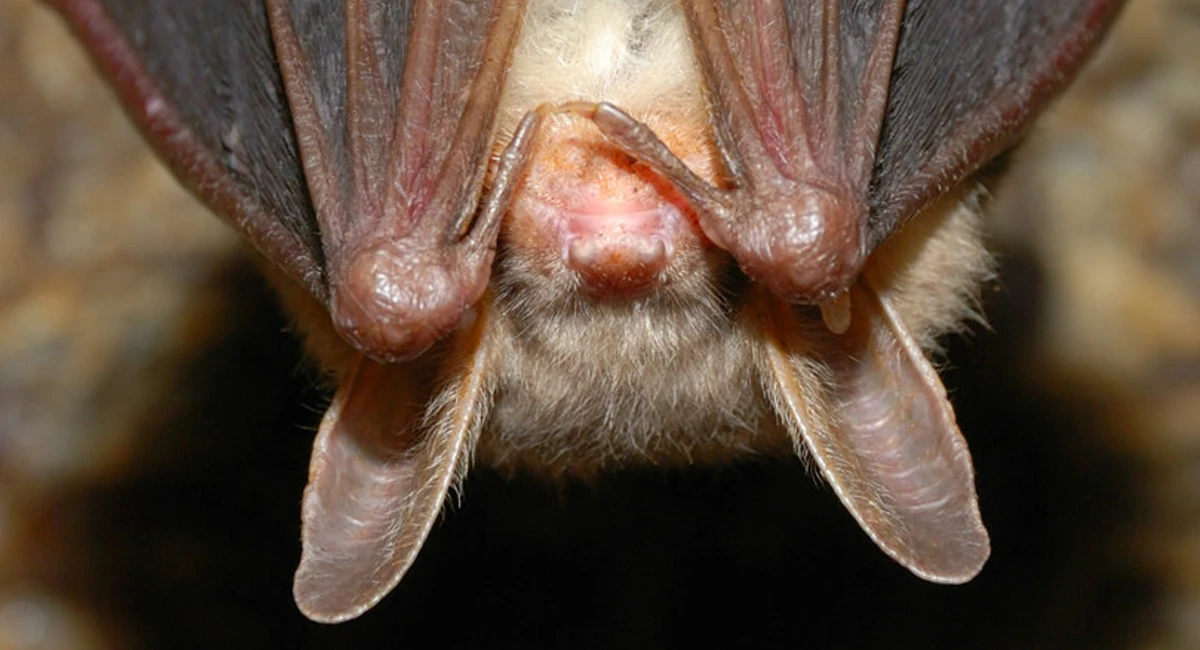For your Home
Login or register for the customer portal
It’s that time of year.

When Halloween time rolls around, pests somehow get just a little bit creepier. Pests that plague us throughout the year suddenly become the mascots of our celebration. One particular flying pest is often a hallmark of Halloween decor. Adorning greeting cards, jack-o-lantern stencils, and more, the bat finds itself at the forefront of this spooky season. Because of its resemblance to a rodent, people often assume bats are a part of the rodent family. But are bats rodents? Find out here.
If you’re concerned about bats on your property, send us a message. Our pest specialists will humanely remove the bats and help you prevent their return.
Contrary to popular belief, bats are not rodents. They’re not even closely related. Research suggests bats are related to primates such as monkeys, apes, and yes, even humans. Bats are mammals. They have a 4-chambered heart, a backbone, complex brain functions, hair, mammary glands…the whole mammal nine yards. With over 1,000 species of bats, they make up just about 25% of all mammals!
Unlike the other 75% of mammals, bats have mastered the art of flying. This often gets them confused with birds, but no, bats are not birds either. Bats have evolved their flight abilities very differently from birds. They are members of their own biological order, Chiroptera, meaning “hand-wing.” When you look at their wings, this translation makes perfect sense. Their wings resemble hands with the fingers spread far apart. Membranes connect the 2-5 digits, leaving the thumb free at the edge of the wing for climbing, fighting, or handling a meal.
Bats also differ from birds in the way they navigate in flight. You’ve probably heard the old adage, “blind as a bat,” but this is actually false. Bats can see; they just don’t use sight to get around. Instead, they use a process called echolocation. This means the bats emit high-pitched sounds and use the echoes of said sounds to determine their surroundings.
The history of bats is complicated. Because bat skeletons are thin and fragile to help with flight, they do not fossilize well. Scientists have gathered old teeth they believe may have come from bats, and have also pieced together 50 million-year-old bat skeletons, but they look very similar to those of modern-day bats. Therefore, the search continues.
As we mentioned earlier, there are over 1000 different bat species. Here are some of the most common bat species in the eastern United States:

Little brown bat
Big brown bat
Eastern red bat
Pallid bat
Spotted bat
Hoary bat
Eastern Pipistrelle
Vampire bats and fruit bats are subjects of frequent inquiry but neither is present in the United States. Vampire bats are most commonly found in Mexico, Central and South America. Fruit bats primarily live throughout Africa, Australia, and Asia.
You should not take bat bites lightly. The primary cause for concern with bat bites is the possibility of rabies transmission. Though there are usually only 1-2 cases of rabies in the United States each year, the primary source of rabies in these cases is a bat. Bat bites and contact with infected bat saliva can transmit this dangerous disease. Many people do not even realize they’ve been bitten by a bat, as bats have tiny teeth which leave bite marks only briefly showing up if at all.

You cannot tell if a bat has rabies just by looking at it. Consequently, you should never touch a bat. If you do come in contact with a bat, are bitten by one, or even suspect it has bitten you while sleeping or otherwise unaware, see a physician immediately. With proper sanitation and vaccination, rabies is treatable. However, preventative vaccinations must be administered as soon after the incident as possible. Without treatment, rabies has a 99.9% fatality rate once symptoms appear. Rabid bat documentation exists in all 49 continental states, so do not take a chance. With bats and the chance of rabies, it is much better to be safe than sorry.
To prevent bats from entering your home, ensure chimneys have proper screening and all holes providing access from the outdoors are sealed. Bats provide beneficial services to our environment, and each state has its own regulations regarding their handling. If you find bats on your property, call Ehrlich right away. Handling bats can be very dangerous and should only be done by a trained professional. Though bats rarely do damage to homes or businesses, they can carry disease and present health risks to humans and other animals.
Ehrlich bat experts will formulate a plan to relocate the bats and help you take necessary action to prevent them from coming back. Whether or not bats are currently giving you trouble, Ehrlich can help bring you peace of mind. From humane bat removal to bat exclusion services, we’ve got you covered.
Our new pricing tool can help you get a better estimated cost using a few factors like: